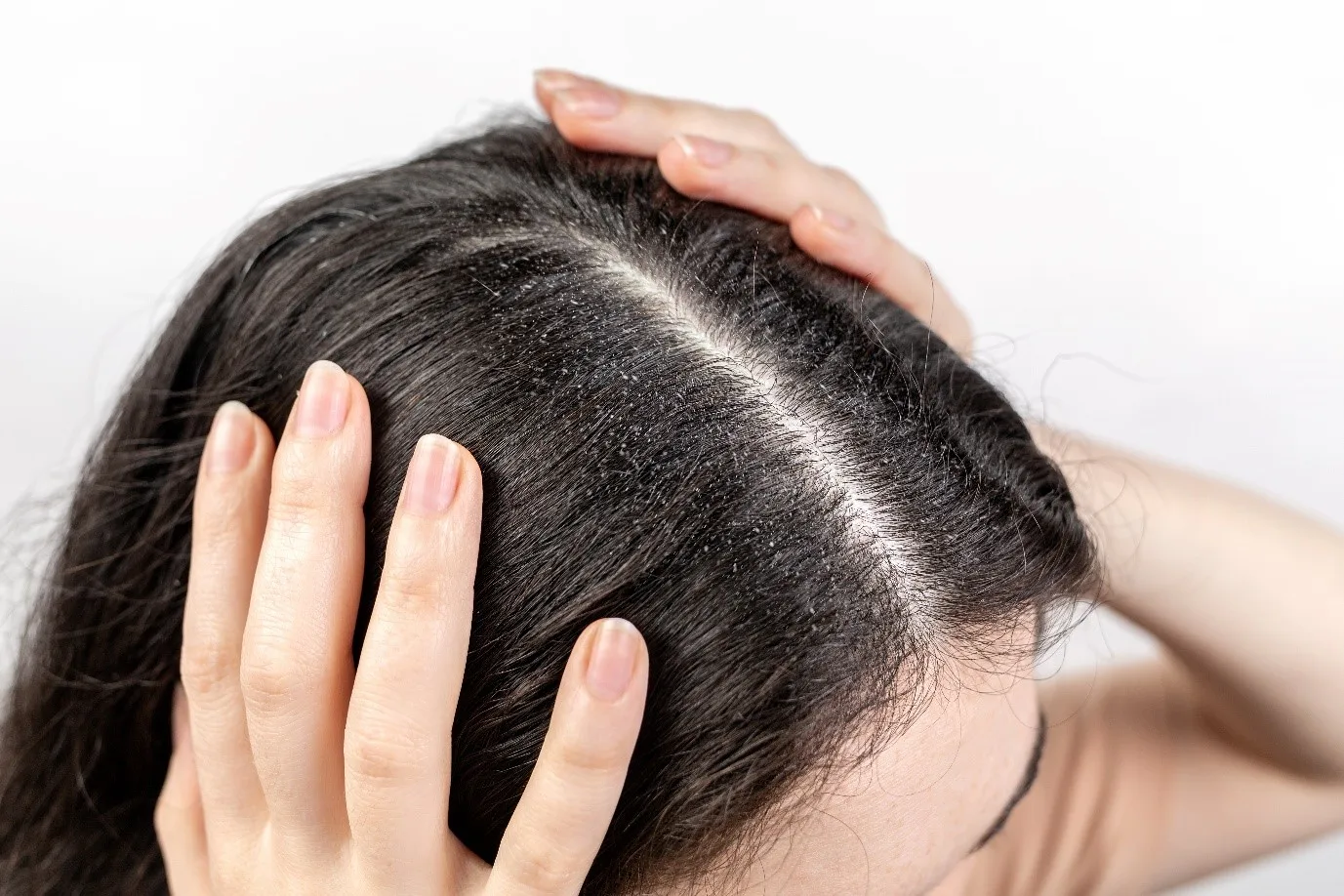Dry Scalp vs Dandruff
When you see flakes on your hair, traditional thinking will make you believe that this is dandruff, and that this dandruff is caused by a dry scalp. So, you crack open that bottle of oil and pour it into your scalp for a nice massage. But your misdiagnosis could end up causing you more trouble unless you understand dandruff vs dry scalp.

First let’s understand oil or sebum
Your face and scalp are covered in sebaceous glands that secrete a waxy oil known as sebum. This oil is produced to coat your head in a protective layer that lubricates and moisturises. Its intention is to create a barrier between your head and the external elements, which reduces the oxidative stress that can cause skin ageing.
This barrier prevents your skin from drying out by retaining moisture. It also prevents bacterial infections and microbes from taking root on your scalp. This is a vital cog in the ecosystem of your scalp and hair, where a disruption can cause you much concern.
Sebum is made up of fatty acids, sugars, cholesterol like lipids, wax, and other organic compounds. This sebum is regulated by the hormones of your body and any changes in your hormones can cause a fluctuation in your oil production. Therefore, you tend to have acne and scalp breakouts during puberty, when your hormones are all over the place. This oil or sebum is the basis of finding the difference dry scalp and dandruff does to your body.
Dandruff and Dry Scalp
Before you look at finding a solution for your problems, it is important to understand what dandruff vs dry scalp is.
Dry scalp is when your scalp does not get enough oil to cover or protect it. This is generally accompanied by dry and brittle hair that is prone to breakage. You will experience itching and flaking that is associated with skin irritation. Dry scalp can be due to various reasons such as over-washing your hair, dry or cold weather, and sometimes even due to hair products like hair dye.
Dandruff on the other hand is caused by excessive oil on your scalp and a fungus called Malassezia Globosa. This fungus waits for your scalp to start producing excess oil and breaks it down into oleic acid. Half of the world reacts to this oleic acid and the result is in the form of an itchy scalp, redness, and flaking. This fungus is naturally occurring and in most cases is not a cause for worry. Only when your scalp increases sebum production is this a concern, which can be due to stress, hormonal changes, diet, etc.
Identify the difference between dandruff versus dry scalp
The main trick is to check visually. There is a key difference in dandruff vs dry scalp flakes, but the first point to note is that a dry scalp will generally be accompanied by dry hair. A dandruff laden scalp will have oily or greasy hair because it occurs during excessive oil production.
But sometimes dandruff can be accompanied by dry-ish hair as well. In this scenario, you look at the scalp for redness, scaly skin, and an oilier texture. Dry scalp does not break into red patches, unless you scratch excessively, and is usually accompanied by cracked skin. You might even find patches of dry skin on other parts of your body.
In addition, you should look at the differences in dandruff flakes vs dry scalp flakes. Flakes are dead skin cells which are starting to shed, and you’ll find them in both skin conditions. Dry scalp flakes are generally smaller and white in colour. Dandruff has larger oily flakes which are white yellow in colour. Dandruff flakes will clump together and attach to your oily hair. This distinction between dandruff vs dry scalp flakes is important in the correct identification of your ailment.
How should you take care of dandruff vs dry scalp?
Once you know what you’re suffering from, the solutions will automatically pop up. You now understand that applying oil when you have dandruff might not be the best idea but could work wonders for a dry scalp. On the other hand, using anti dandruff shampoos are perfect for dandruff, but only some can work for a dry scalp like the Head and Shoulders Supreme Scalp Soothing. And solutions also exist that can work well for both, such as:
- Essential oils like Argan oil can be beneficial for both ailments. They can moisturise your scalp and hair, while employing anti-inflammatory properties to calm any breakouts.
- Aloe vera is another product that breaks the difference dry scalp and dandruff have on your approach. It moisturises your scalp and can also get rid of any excess oil. It has anti-fungal attributes that soothe your itchy scalp and reduce the effects of dandruff.
- Tea tree oil has anti-microbial properties that can be effective in soothing irritated skin and removing dandruff. You should combine it with a carrier oil like coconut oil before application.
- Improving your diet and reducing your stress levels through meditation can have a large impact on regulating your oil production. Stress releases hormones that mess with your scalp oil, which can lead to dry scalp or dandruff.
- Hygiene and a strong hair care regimen will go a long way in helping you deal with both conditions. Lack of oil or excess oil, both require the right kind of products to be used. Try different combinations of shampoos and conditioners to regulate your scalp health.
Once you know how to tell dandruff vs dry scalp, you’ll be well set to understand what works for you. Dandruff can be handled by applying neem, lemon, or even apple cider vinegar. But always be careful with the quantities as wrong application can worsen your condition and be the cause of dandruff. You can also try the Head and Shoulders Smooth and Silky shampoo that helps manage dry hair while getting rid of any dandruff causing germs. You might also consider the Head and Shoulders Neem shampoo or Lemon Fresh shampoo to help prevent dandruff from coming back. There will always be products available for your requirement. All you need to do is try different methods that can help you find the balance that you desire.



